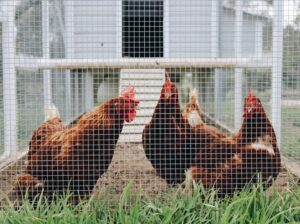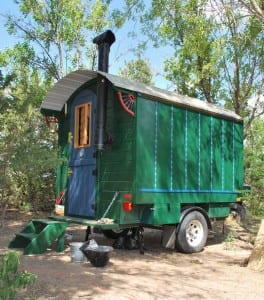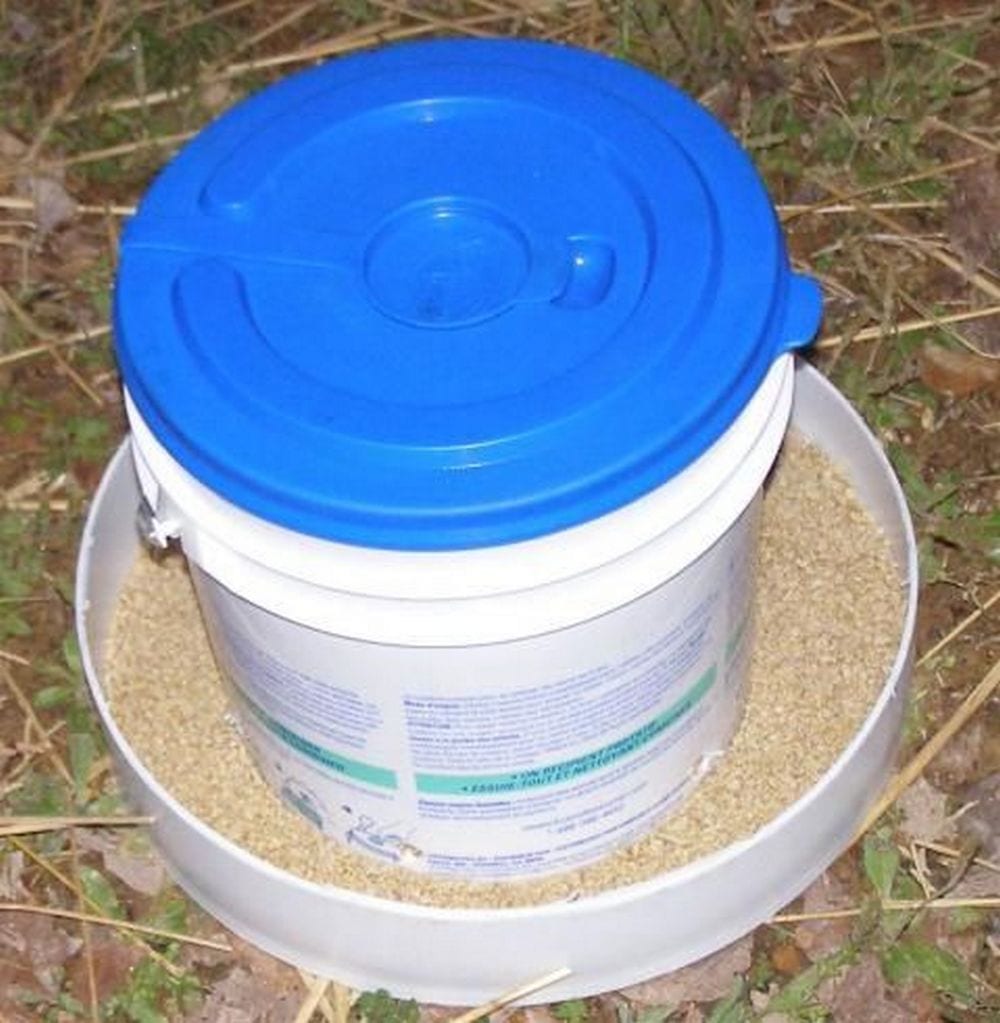
The feathered frenzy of chicken-keeping has been on the rise. As more of us become curious about where our food comes from and strive for a greener lifestyle, raising our own clucking companions has quickly become the coolest coop trend around. This is when a bucket chicken feeder comes in.
The inclusion of chickens in a backyard setting is regarded as a valuable and environmentally conscious addition. They are relatively low maintenance and can provide you with fresh eggs. Plus, they are just plain fun to watch!
As more and more people move into cities, lawmakers are beginning to relax laws and ordinances to allow chickens in residential areas. This is because city dwellers are increasingly interested in taking up this pleasant hobby. Allowing chickens in urban areas has many benefits, including providing fresh eggs, reducing food waste, and teaching children about where their food comes from.
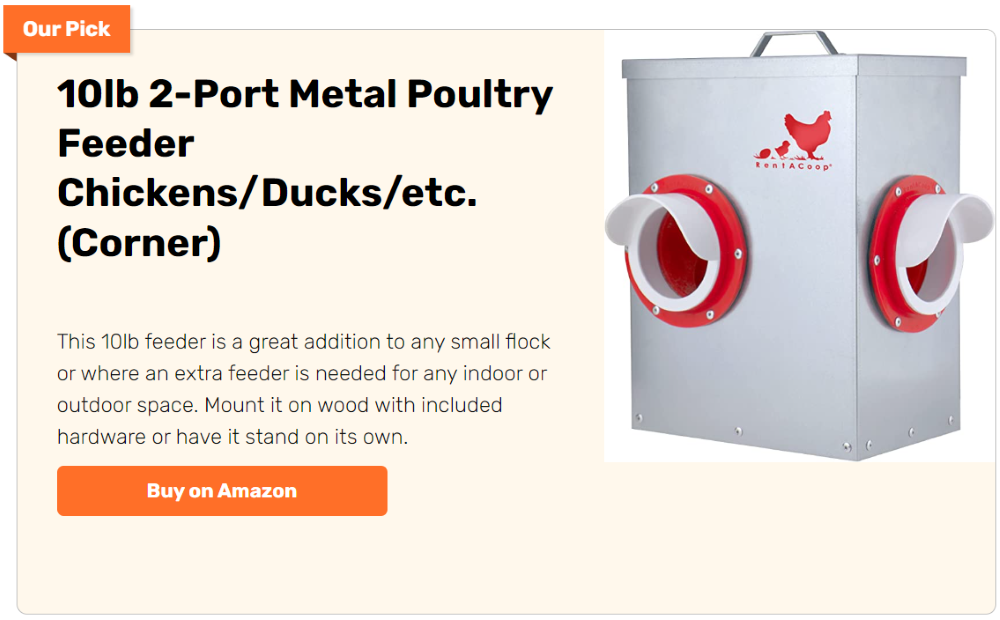
The boys oversee a group of chickens at their residence, tasked with the responsibility of providing them with nourishment. There are occasions when they overlook this duty, particularly when they are away. It frequently falls upon me to issue reminders, ensuring that the chickens are tended to adequately and receive sufficient sustenance. As the chicken whisperer extraordinaire, my top priority is the hale and hearty welfare of my feathered friends.
You know what they say, a happy chicken lays the best eggs! Sometimes, I have to keep my eye on those boys to ensure they’re pulling their weight in the hen house. There have been a few slip-ups, but those chaps felt so sheepish about it that they begged me to splurge on a fancy-pants feeder.
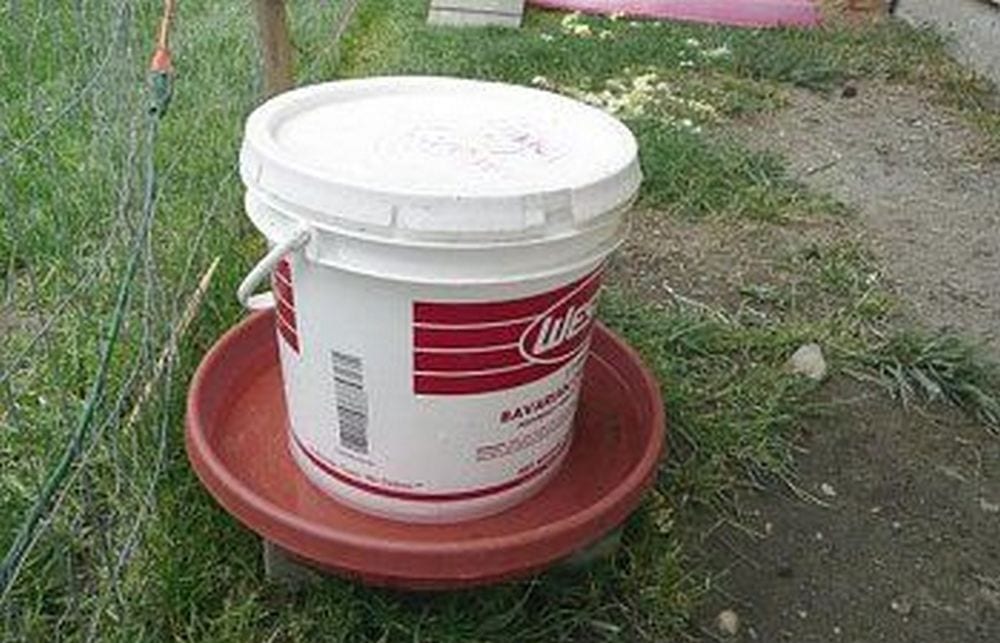
After a few weeks of continuous bugging, I decided to give in. The day before we were scheduled to go feeder shopping, I came across this great DIY project for a bucket chicken feeder. It was made from a five-gallon bucket that we happened to have at home.
The bucket chicken feeder building process was fairly straightforward and simple. The finished product is a chicken feeder that’s low maintenance and it keeps the food dry and clean. Overall, we’re very pleased with how it turned out and it’s been a great addition to the farm!
DIY feeders let you choose materials based on durability and suitability for your environment, ensuring longevity and functionality. With careful bucket chicken feeder design, you can minimize feed wastage, which is essential for efficiency and cost savings. You can design feeders that accommodate the specific size and feeding habits of your chickens while ensuring they receive the nourishment they require.
Also, DIY bucket chicken feeders are typically easy to disassemble and clean, promoting good hygiene for your chickens. By repurposing materials and reducing the need for disposable feeders, you even contribute to a more sustainable and eco-friendly poultry care approach. Crafting feeders can be a fun and creative project, fostering a sense of accomplishment and satisfaction.
Contents
How to Make Your Own DIY Bucket Chicken Feeders
Unlock the secrets to happy, well-fed chickens! In this guide, you’ll learn how to create customized, cost-effective bucket chicken feeder that keeps your feathered friends clucking with delight. Say goodbye to store-bought solutions and embark on a DIY adventure that satisfies your flock and puts your creativity to work!
What you’ll need to build a bucket chicken feeder?
Materials
- 5-gallon bucket with lid
- Feed Tub (basin)
- Glue
Tools
- sharpie
- sharp razor knife
- drill with a large drill bit
- hacksaw blade or a long thin serrated knife
- rag
- tape measure
Steps
Step 1: The chicken feeder system is quite simple and easy to use. You will need to fill the feeder with chicken feed or water. The chickens will then be able to access the feed and water through the feed tub in the feeder opening. This system is an easy way to make sure your chickens have access to the food and water they need.
Step 2: Transforming a 5-gallon bucket into a chicken feeder entails creating openings on the bucket’s underside. You can customize the number of holes according to your chickens’ needs. The greater the number of holes, the more food your chickens can access in a single serving. A drill is a handy tool for perforating the bucket to your desired specifications.
Step 3: Next, you need to glue the bucket into the basin. The basin will serve as the feed tub of your chicken feeder. Make sure that the bucket is firmly in place and is located in the middle of the basin to make room for the feeds so that your chickens can easily access their food.
Click on any image to start the lightbox display. Use your Esc key to close the lightbox
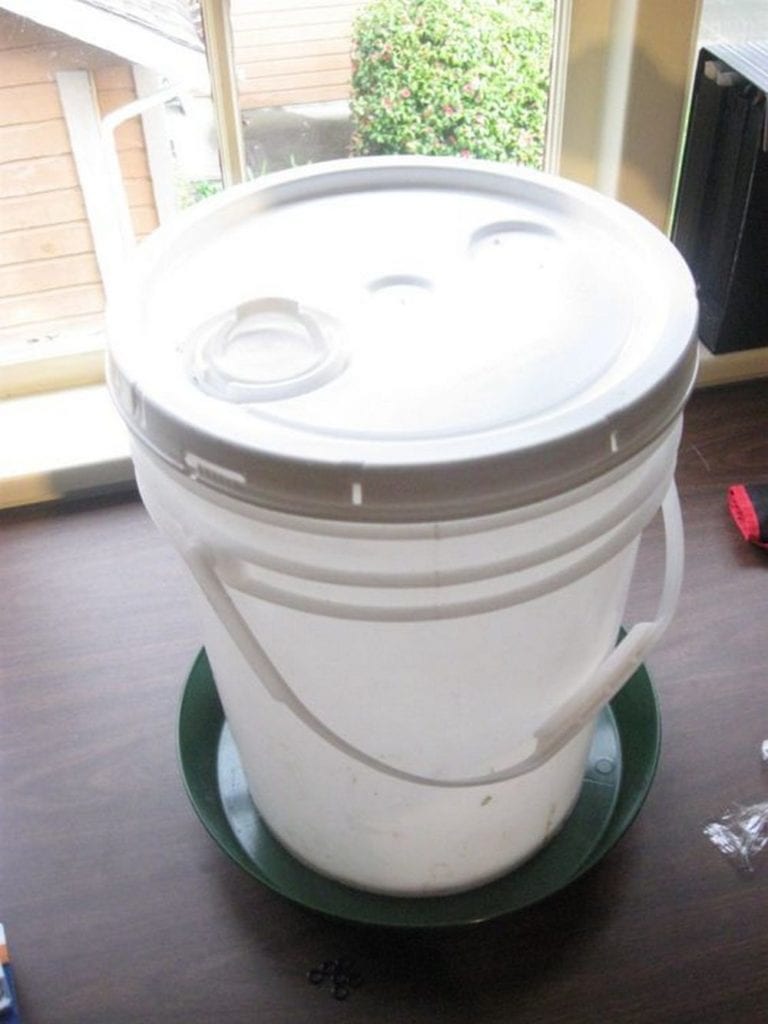

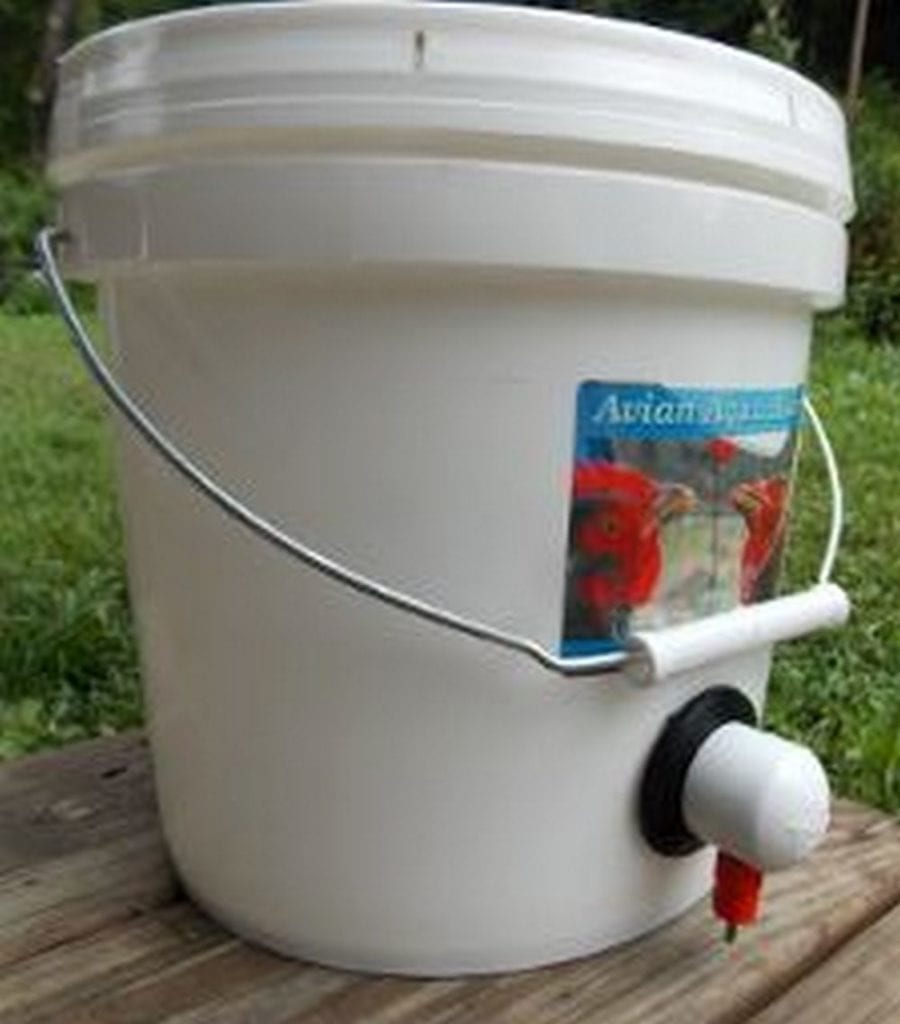
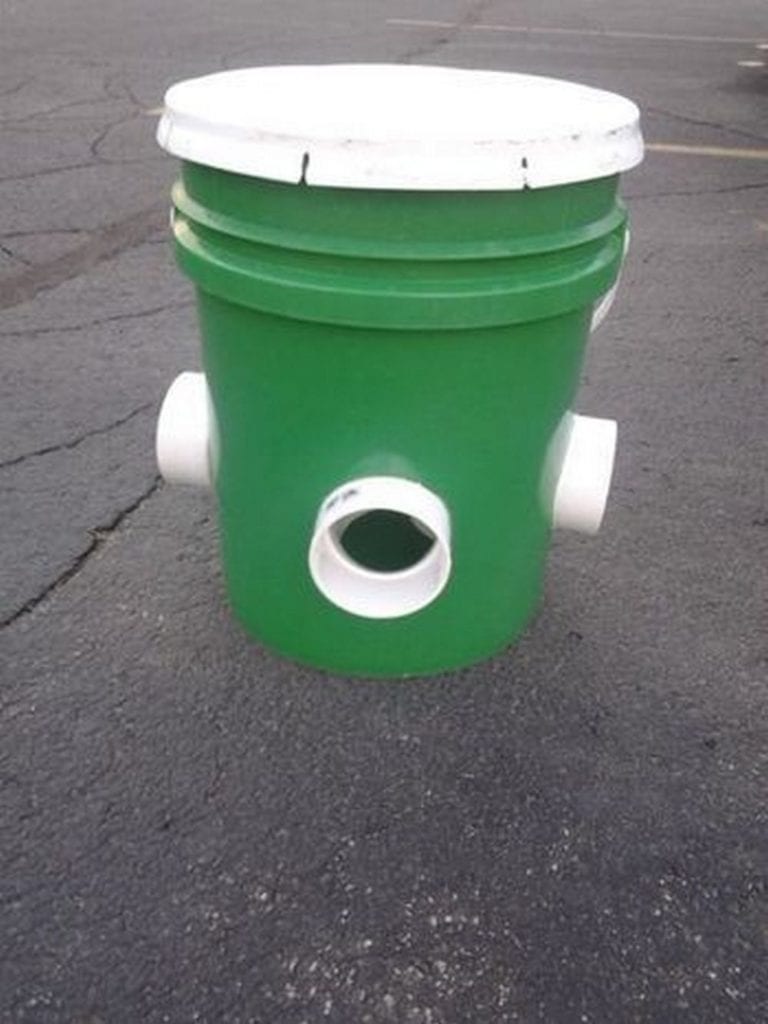
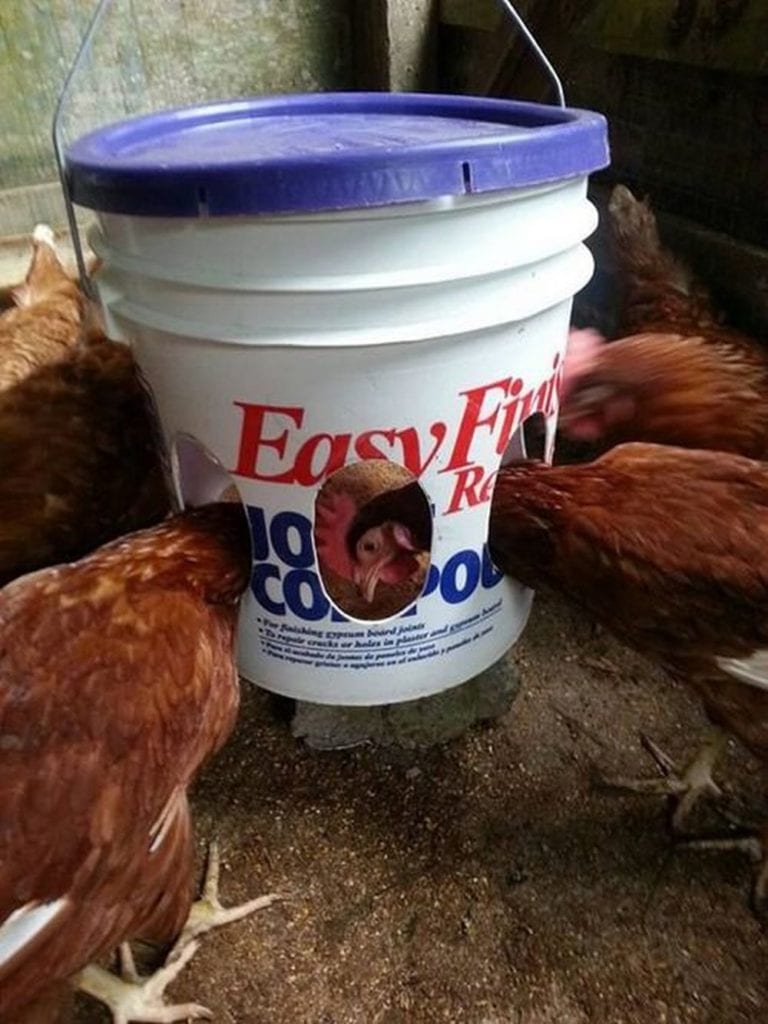


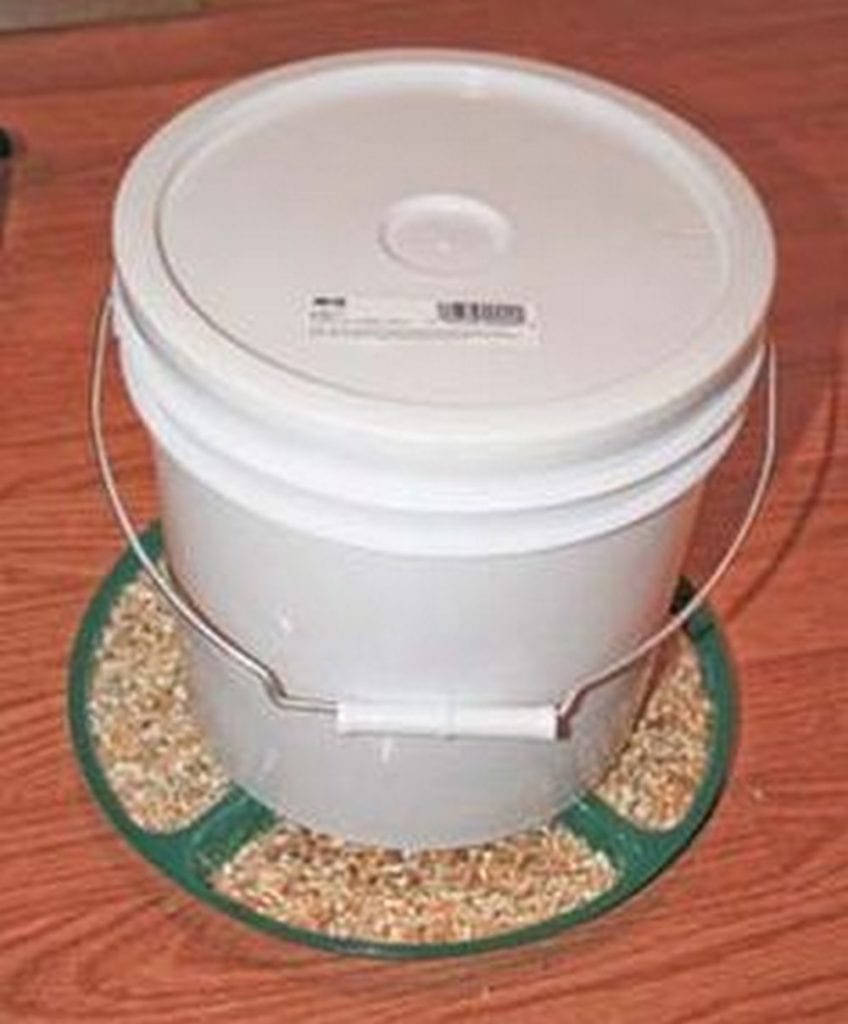
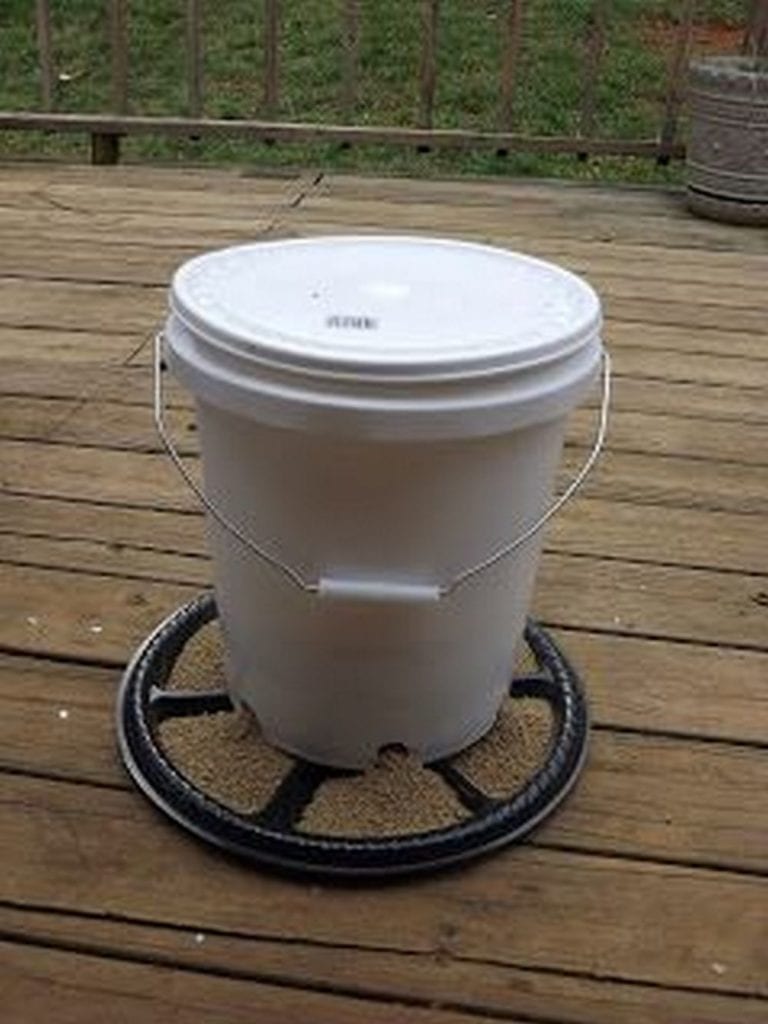
Learn how to turn a bucket into a chicken feeder by watching this video.
Maintenance and Hygiene Practices
Maintaining and ensuring the hygiene of your bucket chicken feeder is crucial for the health of your chickens and the efficiency of your feeding system. Regular cleaning and upkeep prevent the spread of disease and keep your feathered friends happy and healthy.
Let’s explore the essential maintenance and hygiene practices for your DIY bucket chicken feeder.
Routine Cleaning
Set a schedule for cleaning your bucket chicken feeder at least once a week. Empty any remaining feed and thoroughly wash the bucket with warm, soapy water. Rinse it well to remove any soap residue. This routine prevents mold growth and keeps the feed fresh.
Checking for Damage
Inspect your bucket chicken feeder regularly for any signs of wear or damage. Look for cracks, holes, or any areas that might harbor mold or bacteria. Repair or replace parts as necessary to ensure the feeder remains safe and functional.
Keeping Feed Dry
Moisture is a common problem that can lead to moldy feed and unhappy chickens. Ensure the lid of your bucket chicken feeder fits snugly to keep out rainwater. Consider placing the feeder under a shelter if possible to protect it from the elements.
Preventing Contamination
Place your bucket chicken feeder in an area that minimizes the risk of contamination from droppings or dirt. Elevating the feeder slightly off the ground can help, as can regularly moving it to different locations within the coop or run.
Regular Disassembly and Deep Cleaning
If your bucket chicken feeder design allows, disassemble it every few months for a deep clean. This process enables you to reach areas that are not accessible during routine cleaning. It’s an excellent opportunity to inspect each component for hidden mold or damage.
Ensuring Feed Freshness
Monitor the feed in your bucket chicken feeder to ensure it remains fresh and appealing to your chickens. Replace old or damp feed promptly to avoid waste and potential health issues. Storing feed in a cool, dry place before filling the feeder can also help preserve its quality.
Educating Others
If you’re not the only one tending to the chickens, make sure everyone involved knows how to maintain and clean the bucket chicken feeder properly. A little education can go a long way in keeping your chickens healthy and your feeder in top condition.
By adhering to these maintenance and hygiene practices, you ensure that your bucket chicken feeder remains a safe, clean, and efficient way to feed your chickens. Not only does this contribute to the overall health of your flock, but it also maximizes the lifespan and effectiveness of your DIY feeder, making it a valuable part of your poultry care routine.
Addressing Common Challenges
While a bucket chicken feeder is an innovative and cost-effective solution for feeding your chickens, certain challenges can arise. Addressing these common issues promptly ensures that your feeder continues to serve its purpose efficiently, keeping your feathered friends well-fed and healthy.
Here’s how to tackle some of the typical problems associated with bucket chicken feeders.
Ensuring Feed Accessibility
- Challenge: Sometimes, chickens may have difficulty accessing the feed, especially if they are smaller or less dominant within the flock.
- Solution: To ensure all your chickens can access the feed, consider creating multiple feeding ports around the bucket. You might also adjust the height of the feeder so that it’s suitable for all sizes of chickens. For flocks with significant size variances, having more than one bucket chicken feeder at different heights can be a practical solution.
Maintaining Feed Dryness
- Challenge: Keeping the feed dry is a common hurdle, especially in outdoor settings where rain and humidity can spoil the feed.
- Solution: Ensure the lid of your bucket chicken feeder is secure and waterproof. Placing the feeder under a shelter or adding a protective cover can provide extra protection against the elements. Additionally, consider adding small drainage holes at the bottom of the bucket to allow any accidental water ingress to escape.
Preventing Feed Waste
- Challenge: Overfilling the feeder or having too many feed ports can lead to wasted feed, as chickens might spill it while eating.
- Solution: Adjust the size and number of feed ports to match your flock’s needs, preventing them from flicking feed out. You can also place a tray underneath the feeder to catch any spilled feed, which can be reused.
Deterring Pests
- Challenge: Outdoor feeders can attract unwanted pests such as rodents, birds, or insects, which not only consume the feed but can also spread diseases.
- Solution: Design your bucket chicken feeder with smaller feed ports that only chickens can access. Regularly clean the area around the feeder to remove spilled feed that attracts pests. Consider using natural deterrents or safe pest control measures to keep the area pest-free.
Dealing with Freezing Conditions
- Challenge: In colder climates, the feed in the bucket chicken feeder can freeze, making it inaccessible to the chickens.
- Solution: Insulating the feeder can help prevent the feed from freezing. For added warmth, you can place the feeder in a sunny spot during the day or use safe, chicken-friendly heating elements. Ensure any modifications do not pose a risk to the chickens or the integrity of the feeder.
Coping with Wear and Tear
- Challenge: Over time, the bucket chicken feeder might experience wear and tear, such as cracks or fading, which can affect its functionality.
- Solution: Use high-quality, durable materials when constructing your feeder. Regular inspections can help you identify and address any wear and tear early. Consider applying a protective coating to the feeder to extend its life and maintain its appearance.
By proactively addressing these common challenges, you can ensure that your bucket chicken feeder continues to be an effective and reliable feeding solution for your chickens. Not only does this enhance the well-being of your flock, but it also maximizes the value and sustainability of your DIY project.
Bucket Chicken Feeder Bliss!
Delve into the realm of DIY bucket chicken feeders with this comprehensive 3-step guide! Unveil the true art of poultry care by crafting these personalized feeders that are not simple to make but also guarantee the well-being of your cherished chooks.
These ingenious feeders provide a novel approach to nurturing your feathered friends, ensuring their nutritional needs are met while granting you a sense of accomplishment that resonates with every peck. The beauty lies not only in their functionality but also in the bond you foster with your flock through this thoughtful and efficient endeavour.
Bid adieu to the traditional store-bought options and welcome a budget-friendly, innovative approach to caring for your chickens. This DIY endeavour goes beyond mere feeding; it entails establishing a connection rooted in affection, ingenuity, and the gratification of self-reliance.
Embrace a new way of tending to your feathered friends! Have you stumbled upon any unused buckets that can be skillfully transformed into effective chicken feeders? Now is the perfect moment to harness your creativity and resourcefulness to maximize the potential of these old buckets. Revel in the crafting journey, and witness your chickens reap the rewards of your inventive efforts!


